|
Health care for Oregonians
 Since last week’s election, the Oregon Health Authority (OHA) has been getting questions about the future of health system transformation in Oregon and the impact the election will have on health care for Oregonians. I want to assure everyone that the Governor and state remain committed to ensuring all Oregonians have access to high-quality, affordable health care. Oregon has been a leader in health care innovation for decades, and has been highly successful in standing up a new coordinated model of care that has improved quality. Further, Oregon’s program has controlled costs, saving billions to the federal government.
Work has been underway since last summer on our waiver renewal. The current waiver does not expire until next summer and we will continue to work with our federal partners to ensure the success we’ve had in our state to transform health care continues.
It’s too early to say what the long term impact on health care will be. There will be a lot of speculation in the next couple of months. There are some important facts to keep in mind. First, Oregon’s Health Plan uses evidence and best practices to produce measurable results for Oregonians in a cost controlled model. Oregon’s health care structures and accountability framework are unique in the country and were in place prior to the enactment of the Affordable Care Act. Second, healthcare is foundational to Oregonians’ ability to have a quality life, including attaining education and employment goals. I look forward to working with the Governor, the Legislature, and our stakeholders throughout the state to ensure Oregon continues to be a leader in health system transformation and service to Oregonians.
Sincerely,
Lynne Saxton,
Director, Oregon Health Authority
|
 |
Primary care home study demonstrates impact of Oregon health reforms
 A new study conducted by Portland State University found that patient-centered primary care homes (PCPCHs) have saved Oregon’s health care system $240 million between 2012 and 2014.
Primary care homes coordinate a comprehensive array of services for patients. They offer after-hours help and connect patients to specialists, nutritionists, behavioral health services and other care. PSU researchers found PCPCHs helped reduce unneeded emergency room visits and other unnecessary care, which drove down costs.
Primary care homes are a foundation of Oregon’s health care transformation model. While PCPCHs are used in both commercial and Medicaid plans, Oregon CCOs rely on PCPCHs to improve the quality of care for OHP members. The new PSU research is in line with our recent Health System Transformation Quarterly Report to the Legislature, which showed that Oregon’s health reforms have reduced OHP members’ emergency department use by 30 percent in the past five years and helped taxpayers avoid $1.3 billion in costs between 2013 and 2015.
It’s just one more indicator that health transformation is improving the quality of care and lowering costs for Oregonians.
|
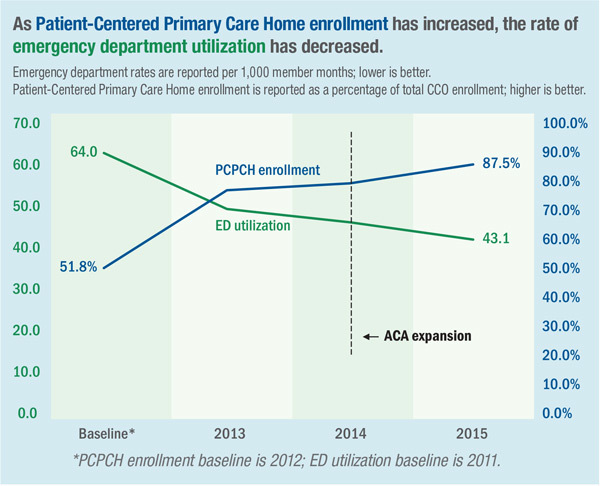  |
CMS administrator expresses support for Oregon health transformation
 There was a reason he came all the way to Oregon. If there was any doubt, he addressed it right away.
Early on a rainy Portland morning in October, Andy Slavitt, the acting administrator of the Centers for Medicare & Medicaid Services (CMS) said, “If you are wondering if my visit is a signal that we are impressed with what you are doing here in Oregon and we want to see you continue your work under your waiver – you’re right: we do.”
Administrator Slavitt was seated next to Governor Brown, speaking to a conference room filled with federal and state policymakers, Oregon Health Policy Board members and health experts. After listening to presentations from Lori Coyner, our OHA state Medicaid director, and independent researchers, administrator Slavitt added: “A lot of people talk about social determinants of health, but there aren’t many people who actually have an action plan like you do here in Oregon.”
Over the course of his two-day visit, Governor Brown and OHA leaders had the pleasure of accompanying administrator Slavitt on a tour that highlighted Oregon’s innovative approach to health reform. They saw PacificSource’s collective impact model in Hood River and viewed the housing and social services Central City Concern provides members of coordinated care organizations in downtown Portland. OHA hosted a meeting for CCO leaders to talk about the impact they are making in their communities. The next day, Governor Brown and OHA representatives met with tribal leaders at the Native American Rehabilitation Association (NARA).
At the last stop at Project Access Now in Portland, the Governor and administrator Slavitt kicked off the open enrollment period for the Affordable Care Act (ACA). They encouraged uninsured Oregonians to sign up for health coverage: Administrator Slavitt pointed out that more than six in 10 Oregonians can find a plan for as little as $100 a month.
Throughout the trip, administrator Slavitt shared his experiences on Twitter. OHA looks forward to continuing to work with administrator Slavitt and his team toward a timely renewal of Oregon’s Medicaid waiver early next year.
|

Rising pharmacy costs in Oregon
Over the past few years pharmacy costs have continued to increase and impact the Oregon Health Plan budget. During the 2017 CCO rate development process, CCOs reported a significant increase in pharmacy expenditures from 2014 to 2015. With limited levers to control costs and the capped growth rate of 3.4 percent annually, the Oregon Health Authority is exploring options to contain these emerging pharmacy costs.
|
|
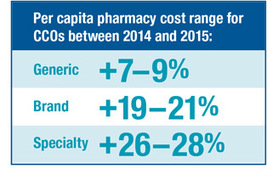 |
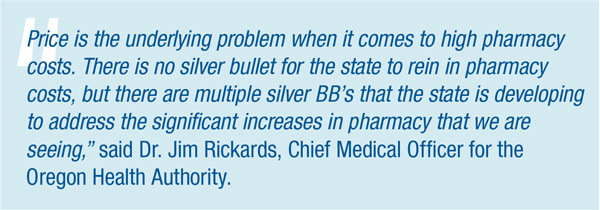
Strategies to address the rising cost of prescription drugs in Oregon include:
- Continue to partner with 11 other states in the Sovereign State Drug Consortium to negotiate supplemental rebates
- Participation in SMART-D multistate collaborative to develop alternative payment models for purchase of high cost specialty drugs
- Developing use of Oregon Prescription Drug Program by CCO’s to leverage group purchasing
- Aligned purchasing
Here are a few key facts about the trends and pharmacy increases in the Oregon Health Plan.
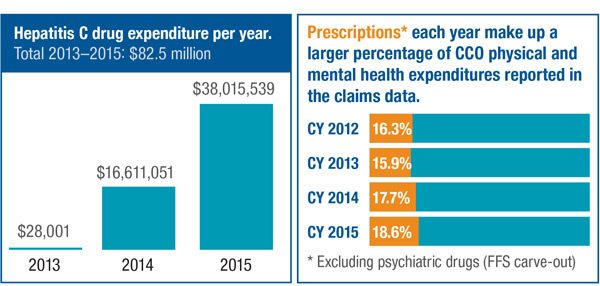  Get the most out of your health coverage in Oregon
Today more than 95 percent of Oregonians have health insurance. Yet many Oregonians lack information about their benefits, how to access care and how to reduce their out-of-pocket costs. For others, a lack of information about how to apply for coverage or reduce premium costs keeps them from enrolling.
To bust health insurance myths and encourage more Oregonians to get covered and use their benefits, OHA and the Oregon Department of Consumer and Business Services (DCBS) are partnering to raise awareness about insurance coverage as open enrollment for commercial plans begins this week.
During the next two months the agencies will raise awareness through a series of media opportunities and a “Did you know?” social media campaign highlighting little-known, misunderstood or invaluable facts about the benefits of having health coverage.
OHA, through the data from the biennial Oregon Health Insurance Survey, has published seven informational fact sheets about how Oregonians access and use health insurance. To begin raising awareness, here are three tips from OHA fact sheets to get the most out of your health coverage in Oregon:
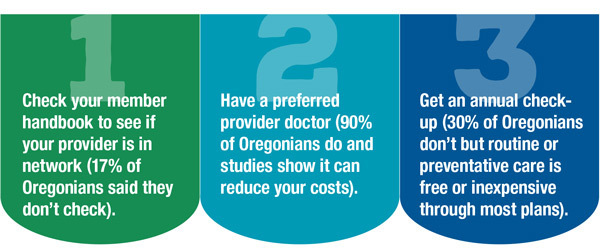  State Hospital Psychology Internship Program
|
The Oregon State Hospital has recently been approved by the American Psychological Association as a training site for psychology interns and will have the first cohort of graduates from this program later this year. This is a significant accomplishment for the hospital psychology program and will help to recruit and train staff in the future.
|
|
 |
|